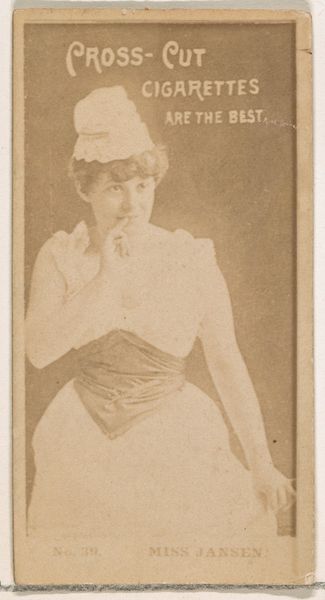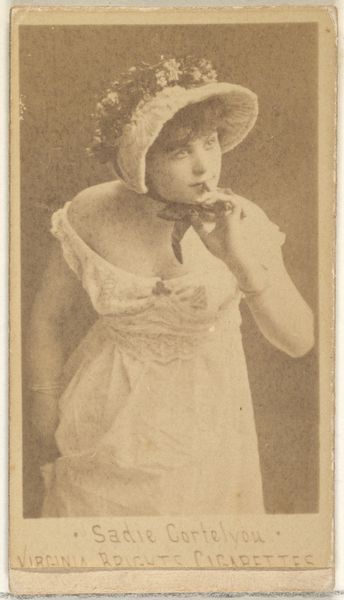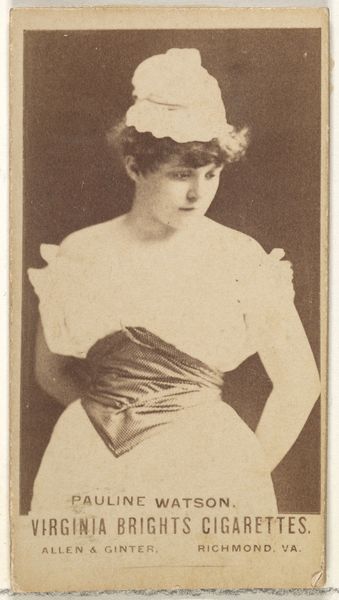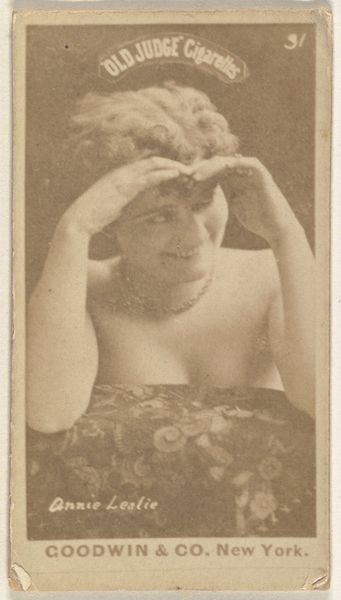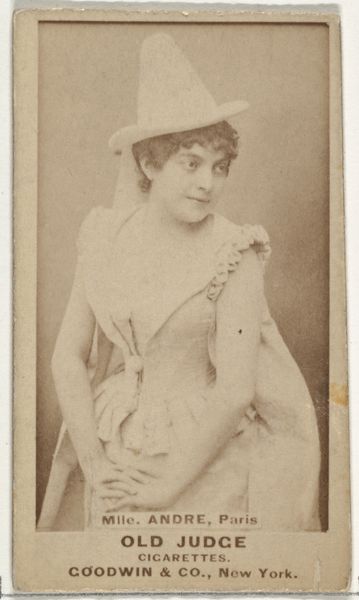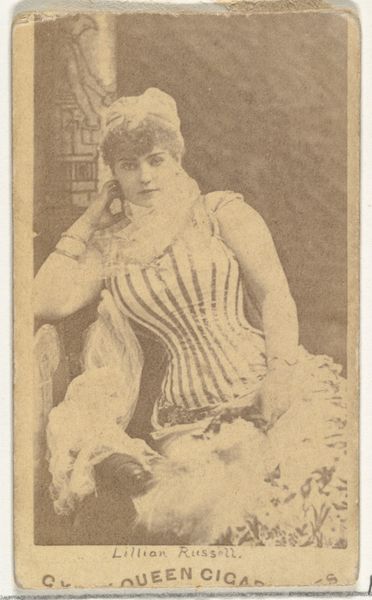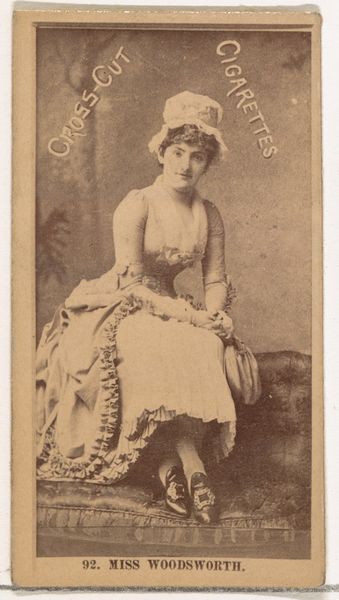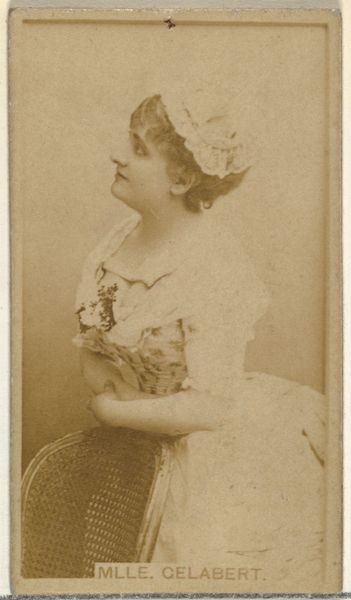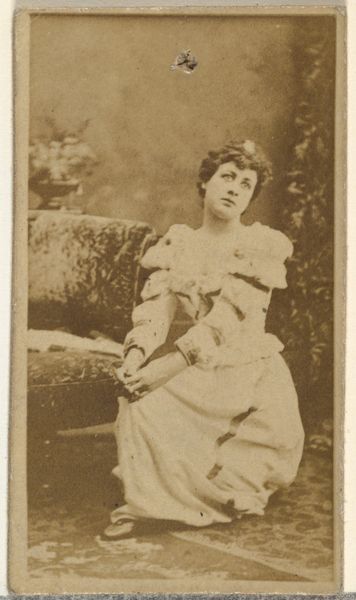
Marie Janson, from the Actors and Actresses series (N45, Type 1) for Virginia Brights Cigarettes 1885 - 1891
0:00
0:00
drawing, print, photography
#
portrait
#
drawing
# print
#
photography
Dimensions: Sheet: 2 3/4 x 1 3/8 in. (7 x 3.5 cm)
Copyright: Public Domain
Curator: I’m struck by the somewhat cheeky yet elegant pose of Marie Janson. What’s your first impression? Editor: Well, the sepia tone gives it a classic feel, but honestly, my first thought is, what's she trying to keep secret? There's a mischievous glint there. And it seems quite small in scale. Curator: That’s quite perceptive. The image is titled "Marie Janson, from the Actors and Actresses series (N45, Type 1) for Virginia Brights Cigarettes," created between 1885 and 1891 by Allen & Ginter. Its placement on a cigarette card is crucial to understanding how images were consumed and how celebrities were commodified in that era. It's part of the larger Actors and Actresses series—depicting famous actors and actresses of the time. The material make-up is photography, print, and drawing on paper. Editor: It’s interesting that these celebrity portraits are literally mass-produced and used as promotional material, inserting celebrity into the daily act of consumption through tobacco. Can you say more about the technique? Curator: I would say this links into wider social ideas of celebrity. I’d posit that its circulation within consumer culture offered a tangible connection to larger than life personas for those lower down the socio-economic ladder. In terms of process, Allen & Ginter often used photographic portraits, but would also employ drawing, in particular the delicate shading around her face, and the detailed drawing of her costume to elevate the quality of what was at the end of the day a commercially purposed card. We also cannot underestimate its appeal to largely male consumers during a period of nascent, burgeoning industrialization and, to be quite frank, a general increase in visibility for women in the public sphere. Editor: That makes me consider the kind of labor required to churn these out on such a scale. This era saw significant advancements in printing technology; it's likely these were produced using lithography, maybe even chromolithography given the company were pioneers in colour production. Consider how this industrialization shaped aesthetics – both democratizing image production and placing new demands on image production as capital. Curator: Yes, that relationship between increased material capacity and the need for representation. Her confident pose perhaps suggests the changing roles of women and also questions about what a performer *is*. What meanings can you glean from it, even as just an image, a ‘thing’? Editor: It raises questions about the relationship between performers and their audiences and of the role of printed image as currency in society. Ultimately the commodification of Marie Janson through a cheap cigarette giveaway gives some hint into the development of celebrity culture. Curator: Absolutely. Examining Marie Janson through the lens of print and industrial processes gives us crucial insight into art making and circulation at a critical moment. Thanks. Editor: Thank you, your highlighting her role, in all senses, helped me better understand.
Comments
No comments
Be the first to comment and join the conversation on the ultimate creative platform.
